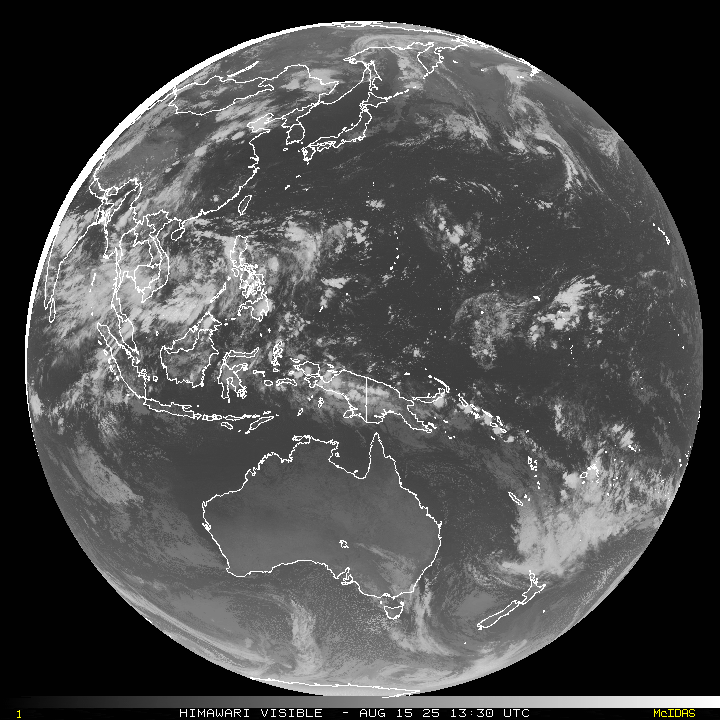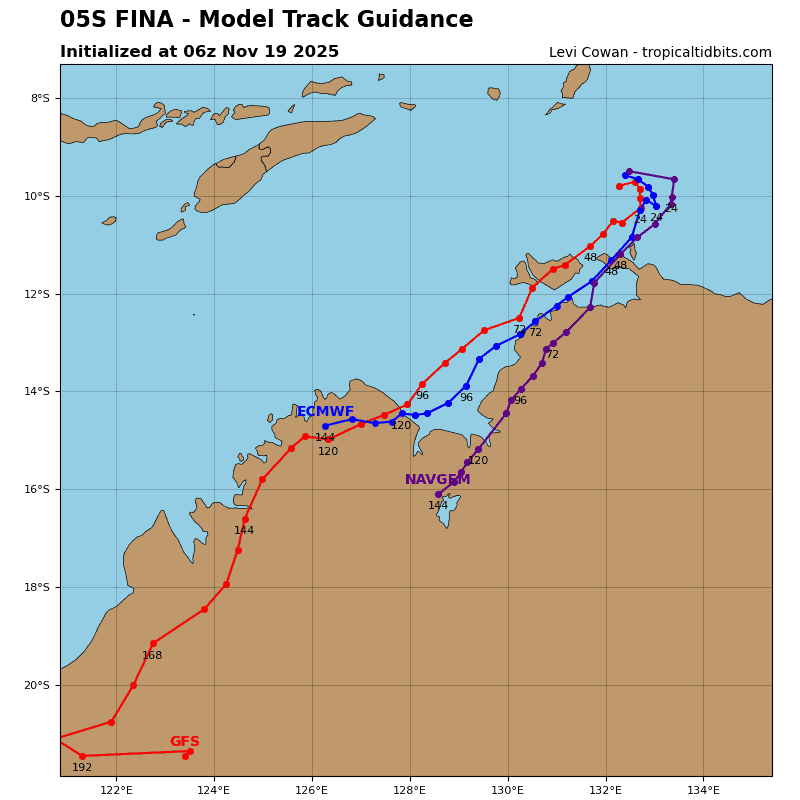Current Snapshot
For all the latest updates visit: DisasterAWARE
By PDC’s Senior Weather
Specialist Glenn James

The Pacific Disaster Center’s (PDC Global) Saturday, January 13, 2024, Tropical Cyclone Activity Report…for the Pacific Ocean, the Indian Ocean, and adjacent Seas
Current Tropical Cyclones:
Tropical Cyclone 05S (Belal)…is located approximately 241 NM north-northwest of St. Denis
Northeast Pacific Ocean:
The North Pacific hurricane season officially ended on November 30, 2023. Routine issuance of the Tropical Weather Outlook will resume on May 15, 2024. During the off-season, Special Tropical Weather Outlooks will be issued as conditions warrant.
The eastern Pacific basin hurricane season was above normal, with 17 named storms, of which 10 were hurricanes and eight of those major hurricanes.
From August 16 to 21, Tropical Storm Hilary brought widespread heavy rainfall and flooding to Southern California, with some areas receiving up to 600% of their normal August rainfall. Hilary resulted in the first ever issuance of Tropical Storm Watches and Warnings for the Southern California coastline by NOAA’s National Hurricane Center. In addition, the Center distributed key hazard focused messages for Hilary in Spanish through the agency’s new language translation project.
Hurricane Otis made landfall near Acapulco, Mexico, on October 25 as a category-5 hurricane, with sustained winds of 165 mph. Otis holds the record as the strongest land falling hurricane in the eastern Pacific, after undergoing rapid intensification in which wind speeds increased by 115 mph in 24 hours.
Central North Pacific:
The central North Pacific hurricane season officially ended on November 30, 2023. Routine issuance of the Tropical Weather Outlook will resume on June 1, 2024. During the off-season, Special Tropical Weather Outlooks will be issued as conditions warrant.
The central Pacific basin had a near-normal season with four tropical systems traversing the basin.
Hurricane Dora, a category-4 storm, passed south of Hawaii in early August, marking the first major hurricane in the central Pacific basin since 2020. The strong gradient between a high pressure system to the north and Dora to the south was a contributing factor to the wind-driven, fast-moving wildfires in Hawaii.
Western Pacific, Indian Ocean and adjacent Seas:
South Indian Ocean…
Tropical Cyclone 05S (Belal)
According to the JTWC warning number 3, sustained winds are 55 knots…with gusts to near 70 knots.
Animated multi-spectral satellite imagery depicts a rapidly consolidating low-level circulation with improved spiral banding and a compact central dense overcast (cdo) feature obscuring the low-level circulation center. A microwave image supports the initial position with medium confidence. This microwave image shows deep convective banding primarily over the western semicircle with a developing inner core and possible eyewall over the western quadrant.
Tropical cyclone 05S is forecast to track south-southwestward to southward along the western periphery of the ridge through 24 hours. By 36 hours, TC 05S is expected to turn sharply southeastward as the subtropical westerlies shift over Madagascar and weaken the ridge.
TC 05S is expected to rapidly intensify over the next 36 hours under very favorable conditions, with a peak intensity of 105 knots anticipated by 36 hours. Steady weakening will commence after 48 hours due to increasing (15 to 25 knot) vertical wind shear associated with the strengthening subtropical westerlies.
TC 05S will track generally east-southeastward through 120 hours along the southwestern periphery of the reoriented ridge positioned to the northeast. After 96 hours, there is a short window for slight re-intensification as the subtropical westerlies and an associated shortwave trough propagate eastward, with decreasing vertical wind shear and improved poleward venting.
There’s an area of disturbed weather, being referred to as Invest 98S…located approximately 184 NM west of the Cocos Islands.
Animated multi-spectral satellite imagery and a microwave image depict a broad, partially exposed low-level circulation center (llcc) with deep convective bursts beginning to form over the center, and formative banding in the western and northern peripheries wrapping into the llcc.
Environmental analysis indicates that 98S is in a favorable environment for further development with good equatorward outflow aloft, low (10-15 knot) vertical wind shear, and warm sea surface temperatures.
Global models are in agreement that 98S will be quasi-stationary as it continues to develop over the next 24-48 hours.
Maximum sustained surface winds are estimated at 20 to 25 knots.
The potential for the development of a significant tropical cyclone within the next 24 hours is upgraded to medium.








